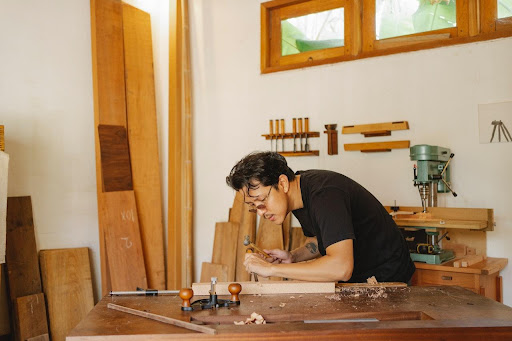Woodworking is a rewarding and enjoyable hobby, but it can also be dangerous if you fail to take proper safety precautions when operating different machinery. Whether you are a seasoned pro or a beginner just starting out, understanding the basics of woodworking safety is essential for preventing accidents and injuries.
Taking the necessary precautions will also help ensure the equipment’s longevity. Furthermore, following safety guidelines and best practices can reduce the risk of accidents and injuries. This will help protect you from dealing with a Whitby injury lawyer and liability in the event of an accident.
Here are some tips for staying safe when using various types of machinery:
Table of Contents
1. Always Wear Proper Safety Gear
One of the most important things you can do to protect yourself when working with woodworking machinery is to put on the proper personal protective equipment (PPE). This includes safety glasses or goggles, earplugs or earmuffs, hearing protection, shoes, a dust mask or respirator, and gloves.
Wearing PPE can help protect you from flying debris, dust, and other hazards that can cause injury. Avoid wearing loose clothing or items that might catch on machinery.
2. Keep the Work Area Clean and Well-Lit
A cluttered and poorly lit work area can increase the risk of accidents and injuries. Before beginning any project, ensure the work area is organized, clean, and free of debris. A well-lit area can help you see what you are working on. This will help prevent trips and falls and allow you to work more efficiently.
3. Be Familiar with the Machinery
Only operate a machine you are familiar with or have been properly trained to use. Before using any woodworking machinery, read the operator’s manual and become familiar with the machine’s controls and safety features. You must understand how to properly adjust, set up, and operate the machine.
4. Keep Guards in Place
Many woodworking machines have guards to protect you from moving parts and flying debris. These guards must remain in place at all times. Never remove or bypass a guard, as this increases the risk of injury.
5. Use the Right Tool for the Job
Ensure you use the correct tool for the task at hand and that it works in good condition. Never use a damaged or in poor condition tool, as this can increase the risk of injury.
For example, when working with a table saw or router, use push sticks, blocks, and feather boards to help guide the wood through the machine. This will help keep your fingers and hands away from moving parts and blades.
6. Unplug the Machine Before Making Adjustments
Always unplug or disconnect the power source when adjusting a woodworking machine to prevent accidental start-ups and injuries. Similarly, turn off the machine and unplug it before performing any maintenance or cleaning.
7. Be Aware of the Noise Level
Many woodworking machines produce a loud noise, which can harm your hearing. To protect your hearing, always wear earplugs or earmuffs. To reduce the risk of hearing loss, be aware of the machine’s noise level and operate it in a well-ventilated area.
8. Take Regular Breaks
Working with woodworking machinery can be physically and mentally demanding. It’s important to take regular breaks to rest, stretch, and refresh your mind. Regular breaks allow you to rest and avoid fatigue, which are top contributors to mistakes and accidents. Regular breaks can also help you stay alert and focused, improving your ability to spot potential hazards and operate machinery safely.
9. Have Safety and Equipment Training
When supervising woodworking projects, you can significantly reduce workplace risk by learning standard safety solutions and encouraging best practices when working with common types of dangerous machinery.
With safety and equipment training, employers can help to create a safer work environment and reduce the risk of accidents and injuries. This can also lead to increased productivity and improved overall job performance.
Safety and equipment training should be ongoing and regularly updated to ensure that employees are aware of the latest safety practices and regulations.
Proper equipment training can include instruction on properly setting up and using machineries, such as table and crosscut saws, counterbalance lift truck rear posts, grinding machines, sanders, and wood-fastening machines.
This includes learning how to adjust and maintain equipment properly, as well as how to identify and troubleshoot common issues. Training on personal protective equipment, such as safety glasses, ear protection, and dust masks, is also essential.
Safety training can also include instruction on proper ergonomics and body mechanics, such as how to lift and move heavy objects safely and how to maintain proper posture while working.
A chiropractor in Whitby can provide education on proper ergonomics and body mechanics to help reduce the risk of injury using woodworking machinery.
They can also provide recommendations for equipment modifications, such as adjustable chairs and tables, to reduce strain on the body. A chiropractor’s visit can benefit woodworkers by addressing pain or injuries, preventing future injuries, and promoting overall safety in the woodworking industry.
Following these tips, you can work on your woodworking projects safely and enjoy the process without injury. Remember that safety should always be your top priority, and it is never too much to take extra precautions to ensure you have a safe and enjoyable experience.





